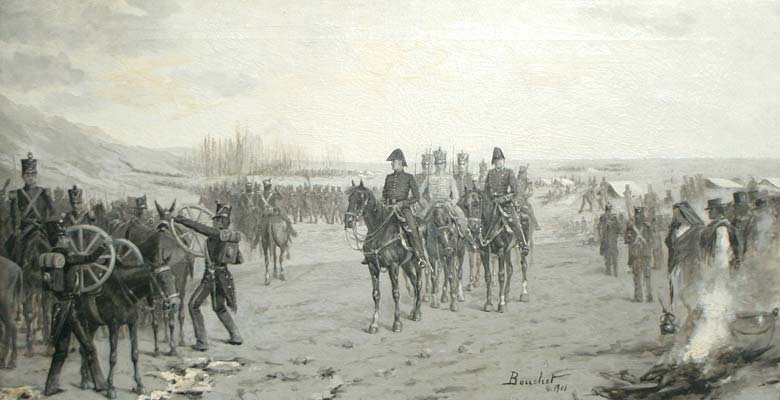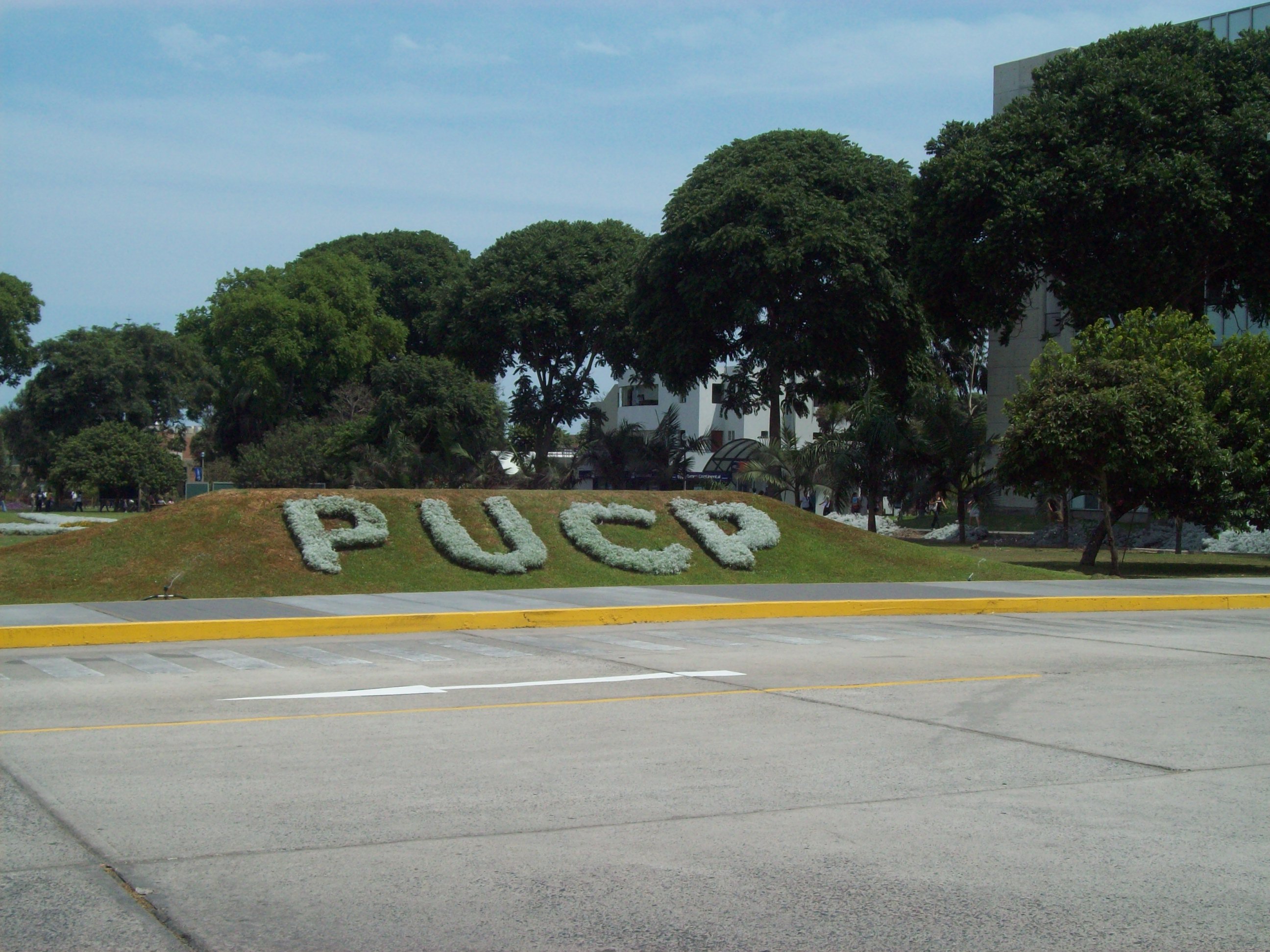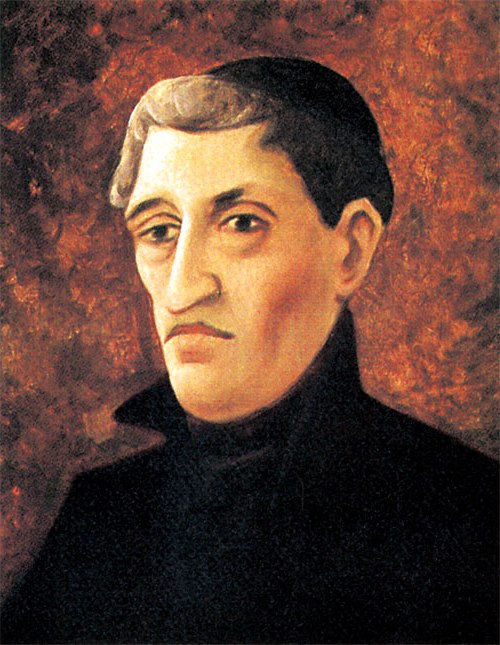|
Reglamento Provisional
The Provisional Regulations () are the name given to an official document issued on February 12, 1821, by José de San Martín as Protectorate of Peru, Protector of Peru, considered the first legal document of the newly born state. The 20-article long document replaced the Viceroyalty of Peru, system of government established by the Spanish Empire, and applied to the territories occupied by the Liberating Expedition of Peru, Liberating Army, which at the time were the province of Chancay—where San Martín's headquarters were set up in Huaura—and the intendancies of Intendancy of Tarma, Tarma (location of Cerro de Pasco, Pasco mine) and Intendancy of Trujillo, Trujillo. These territories were organised in four Regions of Peru, departments, each headed by a president: Department of Trujillo, Trujillo, Department of the Coast, Coast, Department of Huaylas, Huaylas and Department of Tarma, Tarma. It was effective until the Provisional Statute () was promulgated on October 8, 1821. ... [...More Info...] [...Related Items...] OR: [Wikipedia] [Google] [Baidu] |
José De San Martín
José Francisco de San Martín y Matorras (; 25 February 177817 August 1850), nicknamed "the Liberator of Argentina, Chile and Peru", was an Argentine general and the primary leader of the southern and central parts of South America's successful struggle for independence from the Spanish Empire who served as the Protector of Peru. Born in Yapeyú, Corrientes, in modern-day Argentina, he left the Viceroyalty of the Río de la Plata at the early age of seven to study in Málaga, Spain. In 1808, after taking part in the Peninsular War against France, San Martín contacted South American supporters of independence from Spain in London. In 1812, he set sail for Buenos Aires and offered his services to the United Provinces of the Río de la Plata, present-day Argentina and other countries. After the Battle of San Lorenzo and time commanding the Army of the North during 1814, he organized a plan to defeat the Spanish forces that menaced the United Provinces from the north, us ... [...More Info...] [...Related Items...] OR: [Wikipedia] [Google] [Baidu] |
Department Of Trujillo
The Department of Trujillo () was a short-lived department of the Protectorate of Peru that existed from 1821 to 1825, when it renamed into the Department of La Libertad. History After General Jose de San Martin landed at Paracas in September 1820, the intendant José Bernardo de Tagle y Portocarrero and the city mayor led an independence movement that culminated with the declaration of the independence of the Intendancy of Trujillo on 29 December 1820. On 12 February 1821 Jose de San Martin issued a Provisional Regulation, providing for the creation of the department. The Governorate of Bracamoros supported Trujillo's independence and declared its own from the Real Audiencia of Quito on June 4, 1821. It was later incorporated into the department. The department was divided into seven provinces: In 1825, for its contribution during the Peruvian War of Independence, it was renamed the department of La Libertad. See also *Department of La Libertad La Libertad (; in Engli ... [...More Info...] [...Related Items...] OR: [Wikipedia] [Google] [Baidu] |
1821 Establishments In Peru
Eighteen or 18 may refer to: * 18 (number) * One of the years 18 BC, AD 18, 1918, 2018 Film, television and entertainment * ''18'' (film), a 1993 Taiwanese experimental film based on the short story ''God's Dice'' * ''Eighteen'' (film), a 2005 Canadian dramatic feature film * 18 (British Board of Film Classification), a film rating in the United Kingdom, also used in Ireland by the Irish Film Classification Office * 18 (''Dragon Ball''), a character in the ''Dragon Ball'' franchise * "Eighteen", a 2006 episode of the animated television series ''12 oz. Mouse'' Science * Argon, a noble gas in the periodic table * 18 Melpomene, an asteroid in the asteroid belt Music Albums * ''18'' (Moby album), 2002 * ''18'' (Nana Kitade album), 2005 * '' 18...'', 2009 debut album by G.E.M. * ''18'' (Jeff Beck and Johnny Depp album), 2022 Songs * "18" (5 Seconds of Summer song), from their 2014 eponymous debut album * "18" (One Direction song), from their 2014 studio album ''Four'' ... [...More Info...] [...Related Items...] OR: [Wikipedia] [Google] [Baidu] |
Peruvian Legislation
Peruvians (''/peruanas'') are the citizens of Peru. What is now Peru has been inhabited for several millennia by cultures such as the Caral before the Spanish conquest in the 16th century. Peruvian population decreased from an estimated 5–9 million in the 1520s to around 600,000 in 1620 mainly because of infectious diseases carried by the Spanish. Spaniards and Africans arrived in large numbers in 1532 under colonial rule, mixing widely with each other and with Native Peruvians. During the Republic, there has been a gradual immigration of European people (especially from Spain and Italy, and to a lesser extent from Germany, France, Croatia, and the British Isles). Chinese and Japanese arrived in large numbers at the end of the 19th century. With 31.2 million inhabitants according to the 2017 Census. Peru is the fourth most populous country in South America. Its demographic growth rate declined from 2.6% to 1.6% between 1950 and 2000, and its population is expected to reach ... [...More Info...] [...Related Items...] OR: [Wikipedia] [Google] [Baidu] |
Congress Of Peru
The Congress of the Republic of Peru () is the unicameral body that assumes legislative power in Peru. Due to broadly interpreted impeachment wording in the Constitution of Peru, the President of Peru can be removed by Congress without cause, effectively making the legislature more powerful than the executive branch. Following a ruling in February 2023 by the Constitutional Court of Peru, the body tasked with interpreting the Constitution of Peru and whose members are directly chosen by Congress, judicial oversight of the legislative body was also removed by the court, essentially giving Congress absolute control of Peru's government. Since the 2021 Peruvian general election, right wing parties held a majority in the legislature. * * * * The largest represented leftist party in Congress, Free Peru, has subsequently aligned itself with conservative and Fujimorists parties within Congress due to their institutional power. Congress's composition is established by Chapter ... [...More Info...] [...Related Items...] OR: [Wikipedia] [Google] [Baidu] |
Constitution Of Peru
The Political Constitution of the Republic of Peru (; Southern Quechua: ''Perú Suyu Hatun Kamay Pirwa 1993'') is the supreme law of Peru. The current constitution, enacted on 31 December 1993, is Peru's fifth in the 20th century and replaced the 1979 Constitution. The Constitution was drafted by the Democratic Constituent Congress that was convened by President Alberto Fujimori during the Peruvian Constitutional Crisis of 1992 that followed his 1992 self-coup and dissolution of Congress, and was promulgated on 29 December 1993. A Democratic Constitutional Congress (CCD) was elected in 1992, and the final text was approved in a 1993 referendum. The Constitution was primarily created by Fujimori and supporters without the participation of any opposing entities. The 1993 Constitution of Peru differed originally from the 1979 Constitution in that it gave greater power to the president. For example, it allowed for reelection, reduced the bicameral 240-member congress to a unicam ... [...More Info...] [...Related Items...] OR: [Wikipedia] [Google] [Baidu] |
PUCP
Pontifical Catholic University of Peru (, PUCP) is a private university in Lima, Peru. It was founded in 1917 with the support and approval of the Catholic church, being the oldest private institution of higher learning in the country. The Peruvian historian and politician José de la Riva-Agüero y Osma would become his main benefactor by leaving him most of his assets as an inheritance, as it was then a more religious educational institution and linked to the Catholic Church; in contrast to his alma mater and original destination of his inheritance, the National University of San Marcos, where Riva-Agüero considered that liberal ideas and atheism predominated here. In July 2012, after an apostolic visitation, begun earlier, in 2011, by Peter Erdo, Archbishop of Esztergom-Budapest, Hungary, the Holy See withdrew from the university the right under canon law to use the titles ''Catholic'' and ''Pontifical'' in its name. Archbishop of Lima, Juan Luis Cipriani, was the main ad ... [...More Info...] [...Related Items...] OR: [Wikipedia] [Google] [Baidu] |
El Comercio (Peru)
is a Peruvian newspaper based in Lima. Founded in 1839, it is the oldest newspaper in Peru and one of the oldest Spanish language, Spanish-language papers in the world. It has a daily circulation of more than 120,000. It is considered a newspaper of record and one of the most influential media in Peru. History 19th century ''El Comercio'' began as a commercial, political and literary newspaper. Its first publication was on Saturday, May 4, 1839 by José Manuel Amunátegui y Muñoz (Chile, — Lima ) and Alejandro Villota (Buenos Aires, — Paris, ). It was originally a one-sheet afternoon newspaper printed on both sides in tabloid format. The price of the first edition was one Spanish real, silver real. Its motto was "Order, freedom, knowledge." In total there were ten people who prepared the first issue. Printing was made on a handlebar "Scott" flatbed press, powered by a mule-driven winch. Its first headquarters was the Casa de la Pila, located at Calle del Arzobispo No. 147 ... [...More Info...] [...Related Items...] OR: [Wikipedia] [Google] [Baidu] |
Department Of Tarma
The Department of Tarma () was a short-lived department of the Protectorate of Peru that existed from 1821 to 1823, when it was annexed into the Department of Huánuco. History On February 12, 1821, by mandate of the so-called ''Reglamento Provisional'', the Department of Tarma was created in Huaura, integrated on the basis of the Intendancy of Tarma, a territorial district of the viceroyalty of Peru. The new department was only made up of the provinces of Tarma and Jauja since the northern provinces of the old intendancies (Conchucos, Huaylas, Huamalíes, Huánuco and Cajatambo) were grouped in the Department of Huaylas. The city of Tarma remained the capital of this department. The political foundation of this demarcation was carried out by José de San Martín. On November 4, 1823, during the government of José Bernardo de Tagle, the union of the territories of the departments of Tarma and Huaylas was established, naming it the "department of Huánuco", precursor of the ... [...More Info...] [...Related Items...] OR: [Wikipedia] [Google] [Baidu] |
Department Of Huaylas
The Department of Huaylas () was a short-lived department of the Protectorate of Peru that existed from 1821 to 1823, when it was annexed into the Department of Huánuco. It was later reestablished in 1835 and incorporated as a department of the Peru–Bolivian Confederation, being dissolved in 1839 along with the state. History On February 12, 1821, by order of the so-called ''Reglamento Provisional'' in Huaura, the department was created, integrated by the provinces of Huaylas, Cajatambo, , Huamalíes and Huánuco and with its capital in Huarás. Its first president was Toribio de Luzuriaga, with governor of Huaraz, Juan de Mata Arnao y García, ceding his office to him three months later. The political foundation of this demarcation was executed by the José de San Martín. However, on November 4, 1823, the government of José Bernardo de Tagle decided to unite the territories of the departments of Huaylas and Tarma, giving it the name "department of Huánuco." Santa re ... [...More Info...] [...Related Items...] OR: [Wikipedia] [Google] [Baidu] |
Department Of The Coast
The Department of the Coast () was a short-lived department of the Protectorate of Peru that existed from 1821 to 1823. The department's lone leader, who held the title of President, was . History On February 12, 1821, during the Peruvian War of Independence, the ''Reglamento Provisional'' was issued by José de San Martín, serving as the country's first legal document and constitution. The document divided the territory occupied by the Liberating Army into four departments, which included that of the Coast, north of Lima. On August 4 of the same year, a Provisional Statute was issued by San Martín, which formally established the Department of Lima. The department was represented at the first Congress of Peru The Congress of the Republic of Peru () is the unicameral body that assumes legislative power in Peru. Due to broadly interpreted impeachment wording in the Constitution of Peru, the President of Peru can be removed by Congress without cause, ... in 1822 by the f ... [...More Info...] [...Related Items...] OR: [Wikipedia] [Google] [Baidu] |
Regions Of Peru
According to the ''Organic Law of Regional Governments'', the regions () are, with the departments, the first-level semi autonomous administrative subdivisions of Peru. Since its Peruvian War of Independence, 1821 independence, Peru had been divided into departments of Peru, departments (Regions) Peru’s 24 departments each have a regional government and legislature responsible for administration, economic planning, and public services. These governments operate with autonomy while still coordinating with national authorities. Each department is led by a regional governor, who is elected by popular vote for a four-year term. The governor is responsible for implementing regional policies, managing budgets, and overseeing infrastructure projects. Supporting the governor is the regional legislative council, composed of elected representatives from different provinces within the department. This council approves budgets, monitors public investments, and ensures government accountab ... [...More Info...] [...Related Items...] OR: [Wikipedia] [Google] [Baidu] |




